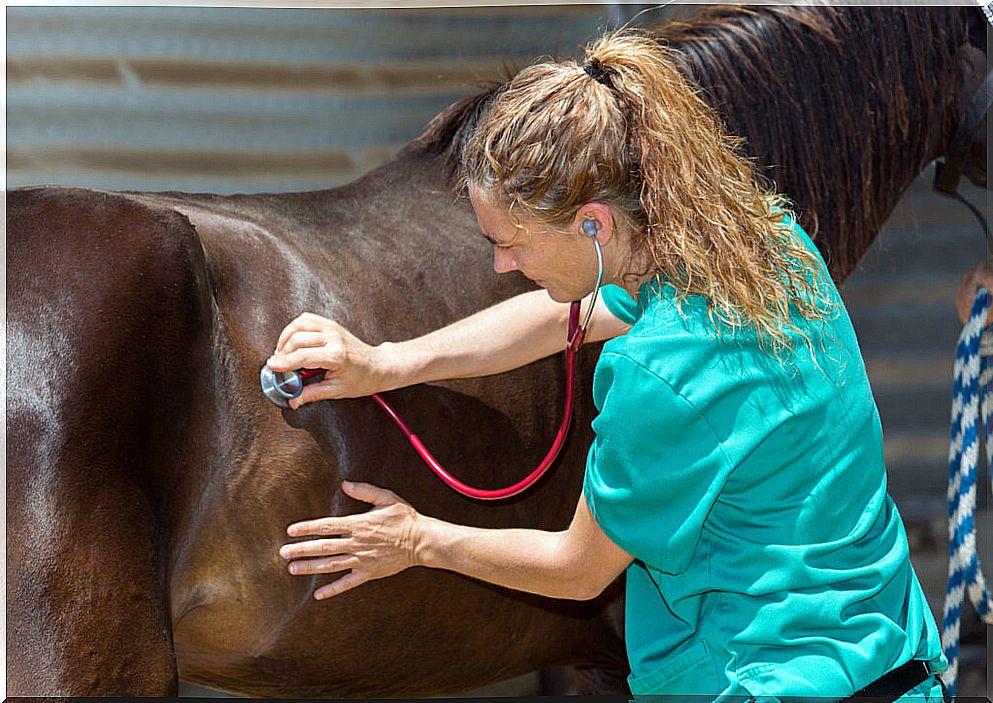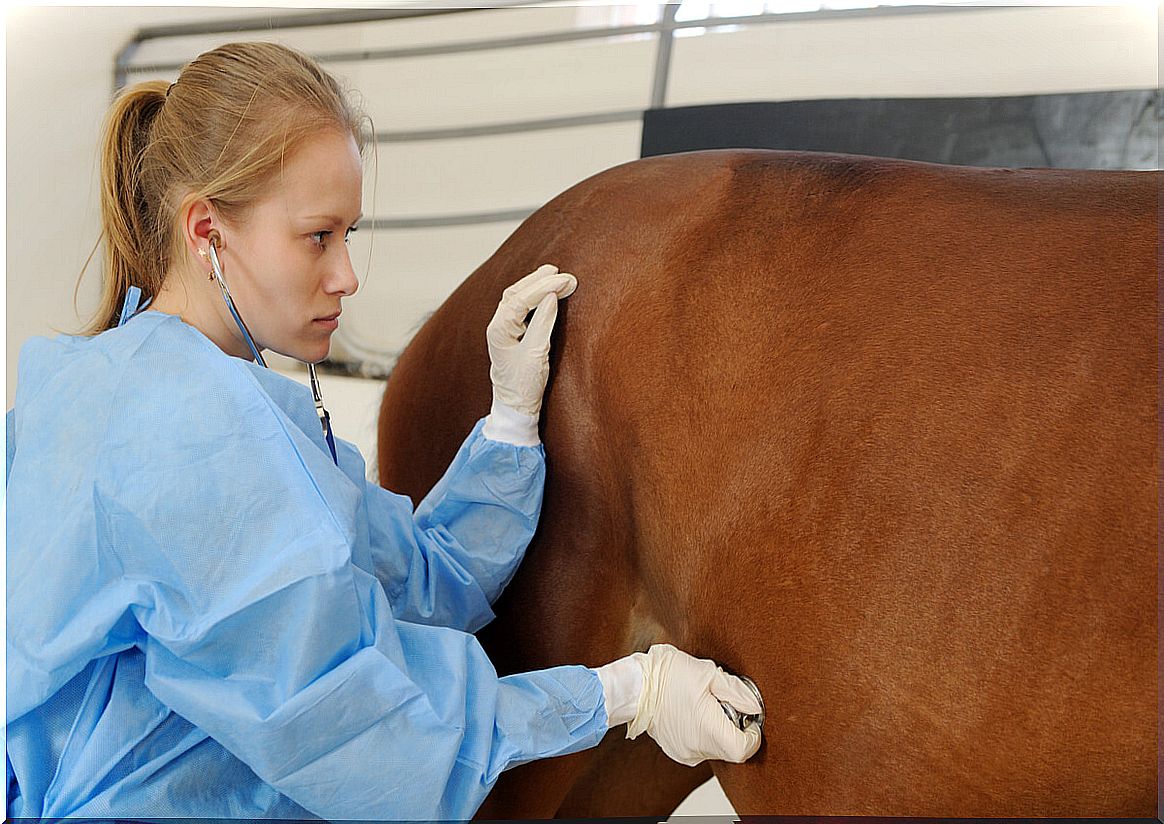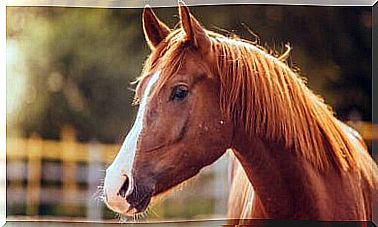Equine Adenitis: Symptoms, Treatment And Complications

Equine adenitis, also known as equine mumps, is an infection of the horse’s upper respiratory tract caused by the bacterium
Streptococcus equi
. In addition to this domestic species, the pathogen can affect other equidae, such as ponies, donkeys and mules.
Equine adenitis is one of the most contagious diseases in horses and is easily transmitted. Also, it can be a zoonosis if the bacterium causing the disease is
Streptococcus equi subsp. zooepidemicus,
which can infect humans. In the following lines we will tell you more about the clinical picture of a horse suffering from equine adenitis.
Clinical signs of equine adenitis
The bacteria that cause adenitis enter the animal through the mouth and lodge in the lymph nodes around the jaw. When this occurs, a sudden fever appears, followed by the typical clinical signs of a cold in horses, such as cough or discharge.
Gradually, the submandibular and retropharyngeal nodules – both located at the beginning of the horse’s throat – swell, form abscesses, and produce a mucopurulent discharge. The swelling can even cause the horses to die by suffocating them.
The course of the disease varies greatly from one animal to another. In older horses it tends to have a mild onset, thanks to a well-developed immune system. Conversely, young people end up with much more severe and difficult to heal lymph node involvement.
Clinical signs of equine adenitis usually appear in the following order:
-
Persistent fever, which is maintained until the full development of adenopathy.
-
Appearance of anorexia and lack of appetite. Often the animal stands with the neck extended. Attempting to eat can cause food to flow back through the nostrils.
-
Depression and apathy.
- Development of pharyngitis, laryngitis and rhinitis.
-
Appearance of nasal discharge, which can be serous and end up as purulent.
-
If the animal does not expel all the mucus through the nose, a noise will be heard in the upper tract. You may also notice the appearance of mucus in the eyes.
-
Development of adenopathy. The knots swell and can stay that way for up to a week. The first clinical sign of adenopathy is the appearance of a warm, diffuse and painful edema on the horse’s neck.

How is equine adenitis transmitted?
The main way of contagion of equine adenitis is direct contact between specimens. A horse with active adenitis that continuously secretes mucus is a major source of infection for sensitive animals of the same species or genus.
Transmission occurs when a sick animal spits mucus on a healthy animal. Horses, through their social behavior, in which head-to-head contact is common, become infected very easily.
Furthermore, there is an indirect way of contracting the infection: sharing the same box, the same feeding trough or the same drinking trough. It can also happen that the keeper transmits the infection between horses when caring for several animals at the same time.
On the other hand, some horses that have recovered from the disease can still transmit the bacteria. This is known as a long-term “subclinical vector”. This animal will continue to spread the pathogen in the population, even if it does not appear to have the disease.
It is very important to keep collecting secretion samples from cured animals, to know exactly when they stop being infectious.
Complications and treatments
As mentioned, this disease, although very contagious and annoying, does not lead to high mortality among animals. However, the development of abscesses in the lymph nodes of young animals can be very annoying and difficult to treat.
However, unfortunately, there is a complication that can be fatal
In rare cases, abscesses develop in other organs of the body. The spread of the abscess throughout the body can occur through various pathways, such as blood, lymph or nerves. The most common sites for these abscesses are the lungs, mesentery, liver, spleen, kidneys, and brain.
Another important complication is the infection of the guttural sacs. These structures are diverticula related to the respiratory system of horses that connect the Eustachian tubes with the pharynx. If this region becomes infected, in addition to clinical complications, the animal can be a carrier for much longer.
Observing how the animal evolves is essential, in addition to administering anti-inflammatories, it is necessary to understand if it has difficulty swallowing or if it has a fever. It is also vital to provide a wetter, easier-to-swallow diet. Occasionally, some vets will administer antibiotics. However, this depends a lot on the individual case.
There is also a treatment for carrier animals. First of all, the horse will be isolated, to prevent it from infecting other animals. Subsequently, the dry pus will be extracted from the guttural sacs by endoscopy and the use of topical antibiotics within the same sacs.

Equine adenitis can be a fatal disease, but only in isolated cases. Of course, it is a very infectious pathology, so infected animals must always be isolated and treated by professionals as soon as possible.









